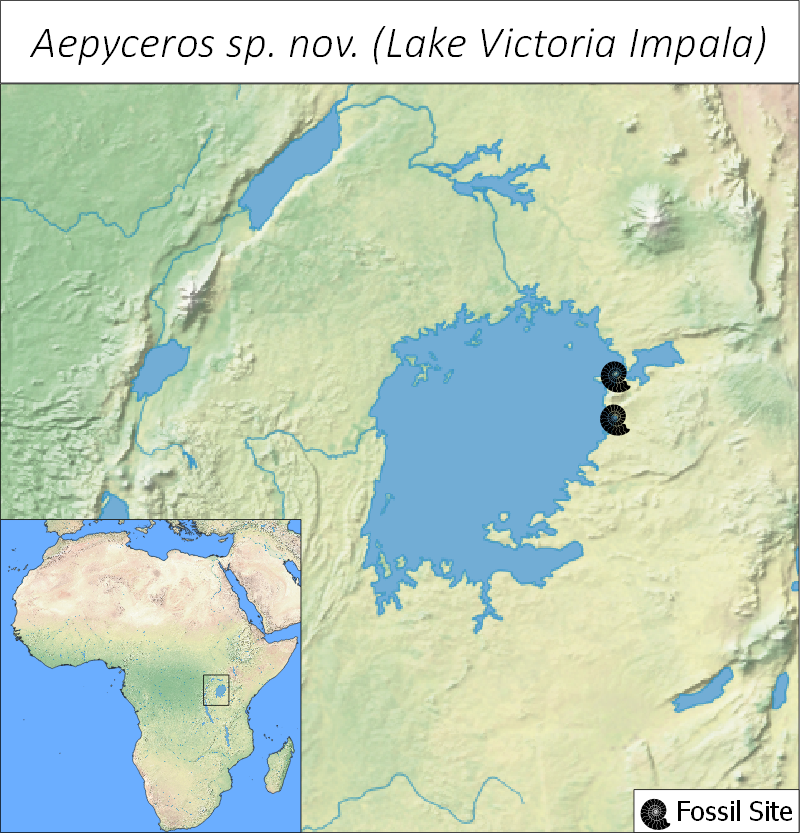Aepyceros sp. Nov. – Lake Victoria Impala
Taxonomy
The Lake Victoria Impala is an obscure species of Late Pleistocene Impala, which lacks an scientific name, due to insufficient material to assign holotype to (Faith et al 2014). The species may be directly descended from a population of impala (Aepyceros melampus) which became isolated during a range contraction when the climate became drier, perhaps early in the last glacial period (1).
Distribution
The recently discovered Late Pleistocene species is only known from two sites on the coast of Lake Victoria in Kenya: Karungu and Rusinga Island (1), these sites date to sometime between 100,000 and 33,000 years ago (1). Faith et al 2014 speculates that the species may have been widespread in East Africa for a short period of time, but as of yet the poorly studied region has not yielded further specimens.
Fig 1. Known fossil sites of the Lake Victoria Impala.
Morphology and Ecology
The Lake Victoria impala is known only from mandible fragments and teeth, even so these are incredibly telling. Despite bearing all the hallmarks of an impala the jaws are much deeper and the teeth have significantly higher crowns (1), these characteristics indicate a higher degree of grazing when compared to its progenitor and are in line with a strict grazing species as opposed to the mixed feeding of the extant impala (1).
The species appears to have inhabited an arid or seasonally arid grassland, which is inferred both from pollen evidence and the presence of megafauna occupying similar habitats such as Grevy’s zebra (Equus grevyi) and the East African oryx (Oryx beisa). Curiously, a number of other extinct African species lived alongside it, including: Damaliscus hyposodon, The African giant buffalo (Syncercus antiquus), Rusingoryx atopocranion and Megalotragus (1).
Citations
1. Faith, J. T., Tryon, C. A., Peppe, D. J., Beverly, E. J., Blegen, N.. (2014). Biogeographic and Evolutionary Implications of an Extinct Late Pleistocene Impala from the Lake Victoria Basin, Kenya. Journal of Mammal Evolution 21, 213-222.

